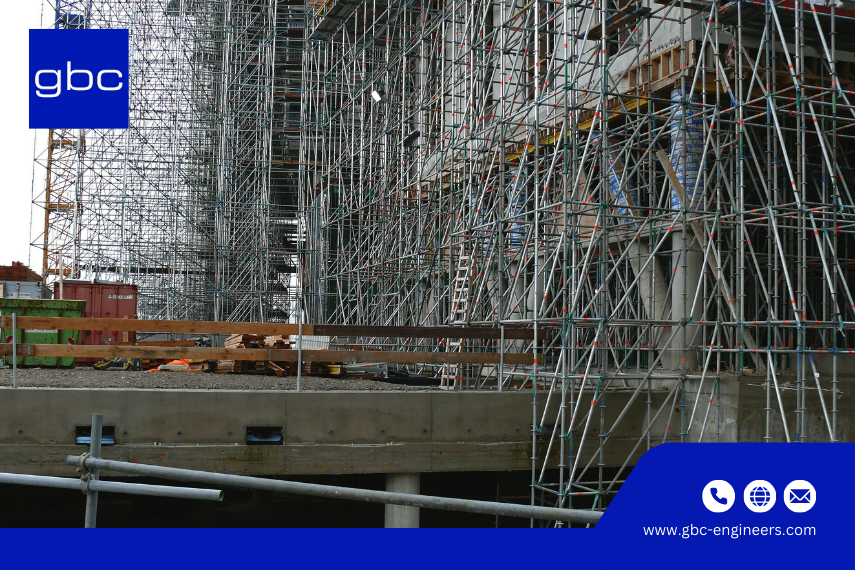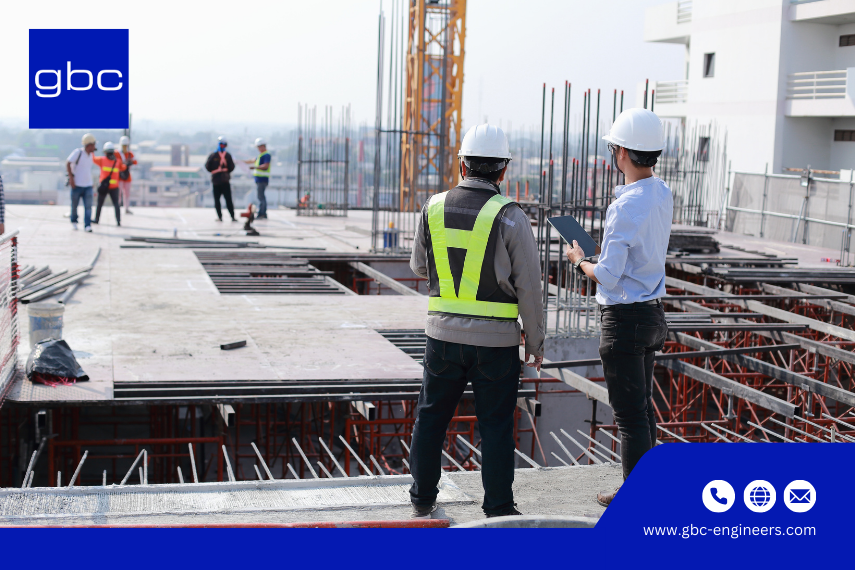gbc engineers specializes in earthquake-resistant design review, ensuring structures comply with global standards while maximizing resilience.
Why Is an Earthquake-Resistant Design Necessary?
- Safety of Occupants and Neighbors: Earthquakes strike without or very little warning. Poorly designed concrete structures can be damaged and collapse, leading to serious injury or casualties. Earthquake-resistant design minimizes structural failure, giving occupants a better chance to escape or survive.
- Protection of Property and Infrastructure: Earthquakes can cause massive financial losses by damaging or destroying homes, offices, bridges, and utilities. For highly important buildings (e.g. nuclear plants, military structures, etc.), failure in earthquake resistance can lead to tremendous destruction. Design with earthquakes in mind reduces repair costs and helps communities recover faster.
- Functionality After the Quake: Critical buildings like hospitals, fire stations, and emergency centers need to remain operational after an earthquake. Sufficient earthquake resistance ensures the facilities retain structural integrity and functionality during and after the event.
- Legal and Code Compliance: It’s common that regions and countries in seismic zones require strict earthquake resistance design according to the law. Ignoring this can result in legal consequences, denial of insurance claims, or forced rebuilding.
- Long-Term Resilience: Designing for earthquakes improves long-term durability and resilience against future shocks. This also contributes to the environment.

What is Earthquake-Resistant Design Review?
An Earthquake-Resistant Design Review is a comprehensive and systematic engineering assessment, often grounded in the latest research, conducted to verify that a building or infrastructure project is designed to perform reliably under seismic loading. The review ensures that all structural aspects of the design contribute to earthquake resilience, enabling the structure to withstand dynamic ground motion without significant damage or collapse.
Key aspects of a typical Seismic Design Review include:
1. Seismic Hazard and Site Characterization:
- Assess seismic hazard based on local seismicity, fault proximity, and expected ground motion.
- Evaluate soil conditions, potential liquefaction, and site-specific amplification effects.
2. Structural System and Behavior Review:
- Design an appropriate lateral load-resisting system (e.g., shear walls, braced frames) to safely transfer earthquake-induced forces.
- Ensure ductility, strength, and stiffness through proper structural layout and configuration.
- Control inter-story drift and ensure regularity in plan and elevation to reduce torsional effects.
3. Seismic Detailing and Constructability:
- Apply detailed seismic provisions (e.g., reinforcement anchorage, confinement, strong-column weak-beam design) to enhance energy dissipation and prevent brittle failure.
- Ensure connections and joints are capable of undergoing inelastic deformation without significant loss of strength.
4. Non-Structural Components and Systems:
- Secure architectural, mechanical, electrical, and plumbing systems to prevent hazards during seismic events.
- Design anchorage and bracing for ceilings, partitions, equipment, and façade elements to reduce damage and protect occupants.
5. Code Compliance and Performance Objectives:
- Ensure full compliance with applicable seismic design codes (e.g., Eurocode 8, ASCE 7, IBC).
- Define performance goals (e.g., life safety, immediate occupancy) based on building use and importance category.

The Earthquake-Resistant Design Review Process: A Step-by-Step Guide
Step 1: Preliminary Review of Project Scope and Seismic Criteria
- Identify building function, occupancy, and importance class.
- Determine applicable design codes and performance objectives (e.g., Eurocode 8, ASCE 7).
- Define seismic design category or zone, based on seismic hazard maps.
Step 2: Site and Geotechnical Assessment
- Review geotechnical report and site classification (e.g., soil type, groundwater, slope stability).
- Evaluate potential hazards: liquefaction, landslides, fault rupture, site amplification.
- Confirm site-specific design spectrum or ground motion parameters.
Step 3: Structural System Review – Analysis, Performance & Detailing
- Structural System Identification: Verify the lateral force-resisting system (e.g., shear walls, braced frames, moment frames).
- Model and Load Evaluation: Check structural analysis models, seismic mass, damping ratios, and applied load combinations.
- Performance Assessment: Evaluate story drifts, base shear, torsional effects, and force distribution.
- Ductility & Stability: Confirm the structure can deform plastically without collapse and has sufficient redundancy.
- Seismic Detailing Review:
+ Reinforcement anchorage and splicing
+ Confinement in plastic hinge regions
+ Strong-column/weak-beam detailing
+ Beam-column joint reinforcement
- Constructability: Assess the practicality and accuracy of detailing in construction drawings.
Step 4: Review of Non-Structural Components
- Evaluate the seismic bracing and anchorage of non-structural elements:
- Ceilings, partition walls, façades
- Mechanical, electrical, and plumbing (MEP) systems
- Equipment and furnishings
- Confirm compliance with drift limits and attachment requirements to avoid falling or dislodged elements.
Step 5: Code Compliance and Recommendation
- Confirm compliance with applicable seismic codes and standards.
- Ensure life safety and intended performance objectives are met.
- Propose corrective actions or design modifications for any non-compliance or deficiencies found.
- Suggest improvements in structural layout, detailing, or component restraint to enhance seismic resilience.
Step 6: Documentation and Reporting
- Prepare a detailed document according to the local requirements that can be checked and approved by the Authority.
Learn More: Top 5 Benefits of Earthquake-Resistant Designs for Modern Buildings
gbc engineers’ Seismic Design Review Services

For more details on our services and privacy policy, please visit: Services – gbc engineers
At gbc engineers, we specialize in seismic design review services to ensure that buildings comply with global earthquake-resistant design standards. We provide these services:
1. Seismic Design Review & Compliance Checks
- Third-party Seismic Design Review
+ Independent verification of structural design, analysis, and detailing
+ Evaluation of structural layout, drift, ductility, and force-resisting systems
- Code Compliance Review
+ Check compliance with seismic codes: Eurocode 8, ASCE 7, IBC, and local standards
2. Innovative Structural Solution Consultants
- Propose economical and resilient modifications to structural systems using modern engineering approaches.
- Integrate advanced technologies (e.g., dampers, base isolation, high-performance materials) to improve seismic performance.
- Support custom, performance-based solutions for complex or unconventional architectural designs.
3. Retrofitting Consulting Services
- Seismic Evaluation of Existing Structures
+ Rapid screening and detailed assessment (ASCE 41, Eurocode, FEMA standards)
+ Identification of structural deficiencies and risk areas.
- Retrofit Strategy Development
+ Concept design and feasibility studies for seismic retrofit
+ Solutions such as bracing, shear walls, FRP, base isolation, or mass dampers
- Technical Support for Retrofit Implementation
+ Design coordination, construction phasing advice, and cost optimization
4. Construction-Phase Support
- Seismic Detailing Review
+ Checking construction drawings for code-compliant reinforcement and connections
+ Verifying strong-column/weak-beam provisions, confinement, lap lengths, anchorage
- Shop Drawing and Bracing Layout Review
+ Validation of seismic bracing for non-structural components (e.g., equipment, façades)
+ Review of fabrication details for seismic performance compliance
On-site Inspection Support
- Site visits to assess proper seismic detailing implementation during construction
- Coordination with site engineers and contractors
5. Post-Earthquake Structural Evaluation
- On-call rapid damage assessments and structural triage
- Engineering recommendations for repair and re-occupancy
Our Projects
FCC PHNOM PENH
French colonial flat made of reinforced concrete structure with a renovation plan to expand the restaurant area.
Services: Architectural and structural survey, in-depth structural assessment with a focus on earthquake-resistant performance to ensure safety and compliance in the adaptive reuse of heritage structures.

ANZ BANK (TK & KRAMUON SAR)
Two buildings renovation for setting up a new data center room to existing reinforced concrete building structures.
Services: Structural survey and assessment with a dedicated focus on earthquake-resistant performance. gbc engineers applies advanced seismic design principles to safeguard critical equipment, ensure regulatory compliance, and enhance the resilience of essential banking infrastructure.

SIHANOUK INTERNATIONAL AIRPORT
Comprehensive extension and full modernization of the existing passenger terminal to meet increased capacity and updated operational standards.
Services: In-depth building investigation, structural assessment with a strong focus on earthquake-resistant performance, and design of structural strengthening and safe building extensions. gbc engineers applies international seismic codes to ensure long-term safety, functionality, and resilience in critical transport infrastructure.

Ready to Build Your Next-Generation Building?
Partner with gbc engineers to design a facility that delivers performance, reliability, and long-term value.
🌐 Contact Us for Seismic Solutions: www.gbc-engineers.com
🏗️ Explore Our Brochure Today: TDD & Structural Assessment_Portfolio.pdf
Our deep expertise in earthquake-resistant design review allows us to deliver structures that are not only safe and resilient but also sustainable. Contact gbc engineers today to learn how our seismic design review services can fortify your buildings against earthquakes.